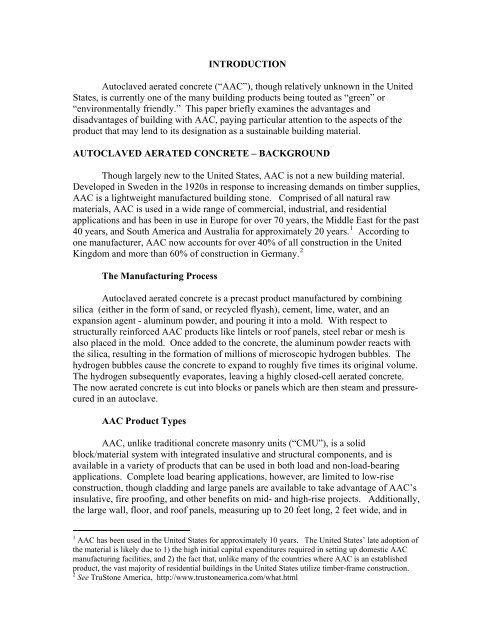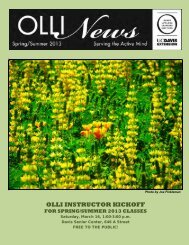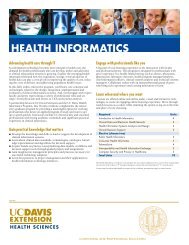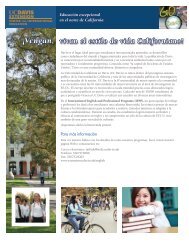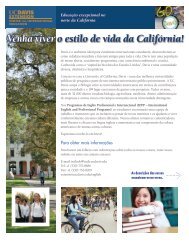Autoclaved aerated concrete - UC Davis Extension
Autoclaved aerated concrete - UC Davis Extension
Autoclaved aerated concrete - UC Davis Extension
You also want an ePaper? Increase the reach of your titles
YUMPU automatically turns print PDFs into web optimized ePapers that Google loves.
INTROD<strong>UC</strong>TION<br />
<strong>Autoclaved</strong> <strong>aerated</strong> <strong>concrete</strong> (“AAC”), though relatively unknown in the United<br />
States, is currently one of the many building products being touted as “green” or<br />
“environmentally friendly.” This paper briefly examines the advantages and<br />
disadvantages of building with AAC, paying particular attention to the aspects of the<br />
product that may lend to its designation as a sustainable building material.<br />
AUTOCLAVED AERATED CONCRETE – BACKGROUND<br />
Though largely new to the United States, AAC is not a new building material.<br />
Developed in Sweden in the 1920s in response to increasing demands on timber supplies,<br />
AAC is a lightweight manufactured building stone. Comprised of all natural raw<br />
materials, AAC is used in a wide range of commercial, industrial, and residential<br />
applications and has been in use in Europe for over 70 years, the Middle East for the past<br />
40 years, and South America and Australia for approximately 20 years. 1 According to<br />
one manufacturer, AAC now accounts for over 40% of all construction in the United<br />
Kingdom and more than 60% of construction in Germany. 2<br />
The Manufacturing Process<br />
<strong>Autoclaved</strong> <strong>aerated</strong> <strong>concrete</strong> is a precast product manufactured by combining<br />
silica (either in the form of sand, or recycled flyash), cement, lime, water, and an<br />
expansion agent - aluminum powder, and pouring it into a mold. With respect to<br />
structurally reinforced AAC products like lintels or roof panels, steel rebar or mesh is<br />
also placed in the mold. Once added to the <strong>concrete</strong>, the aluminum powder reacts with<br />
the silica, resulting in the formation of millions of microscopic hydrogen bubbles. The<br />
hydrogen bubbles cause the <strong>concrete</strong> to expand to roughly five times its original volume.<br />
The hydrogen subsequently evaporates, leaving a highly closed-cell <strong>aerated</strong> <strong>concrete</strong>.<br />
The now <strong>aerated</strong> <strong>concrete</strong> is cut into blocks or panels which are then steam and pressurecured<br />
in an autoclave.<br />
AAC Product Types<br />
AAC, unlike traditional <strong>concrete</strong> masonry units (“CMU”), is a solid<br />
block/material system with integrated insulative and structural components, and is<br />
available in a variety of products that can be used in both load and non-load-bearing<br />
applications. Complete load bearing applications, however, are limited to low-rise<br />
construction, though cladding and large panels are available to take advantage of AAC’s<br />
insulative, fire proofing, and other benefits on mid- and high-rise projects. Additionally,<br />
the large wall, floor, and roof panels, measuring up to 20 feet long, 2 feet wide, and in<br />
1 AAC has been used in the United States for approximately 10 years. The United States’ late adoption of<br />
the material is likely due to 1) the high initial capital expenditures required in setting up domestic AAC<br />
manufacturing facilities, and 2) the fact that, unlike many of the countries where AAC is an established<br />
product, the vast majority of residential buildings in the United States utilize timber-frame construction.<br />
2 See TruStone America, http://www.trustoneamerica.com/what.html


